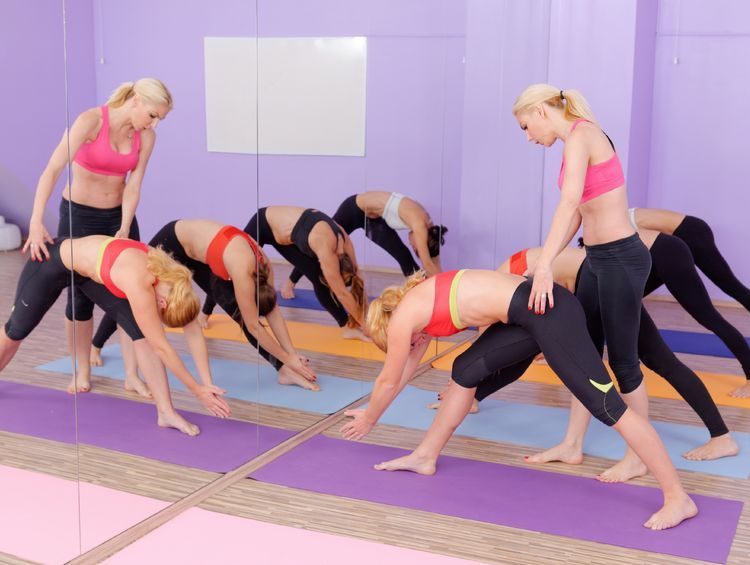The Rise of Aerial Yoga in Modern Fitness
Aerial yoga has rapidly gained popularity as a dynamic fitness discipline that blends traditional yoga principles with the thrill of suspension. This practice involves the use of silk hammocks to support the body in various yoga poses, allowing practitioners to experience gravity-defying movements that enhance flexibility, strength, and balance. If you are seeking a unique way to elevate your workout routine, aerial yoga could be the perfect choice.
Why Aerial Yoga is More Than Just Exercise
Unlike conventional fitness routines, aerial yoga goes beyond physical training. It offers a holistic approach that nurtures both the body and mind. Some key aspects that set aerial yoga apart include:
- Mind-Body Connection – The integration of deep breathing with fluid movements promotes mindfulness and mental clarity.
- Enhanced Strength and Endurance – Engaging multiple muscle groups helps build core stability and overall strength.
- Spinal Health and Decompression – Inversions relieve spinal pressure, improving posture and mobility.
- Stress and Anxiety Reduction – Floating in the hammock fosters a sense of relaxation and tranquility.
Who Can Practice Aerial Yoga?
Aerial yoga is accessible to people of all fitness levels. Whether you are a beginner or an experienced yogi, you can benefit from this practice. Here’s how it caters to different groups:
- Beginners – Can start with basic poses to build confidence and familiarity.
- Athletes and Fitness Enthusiasts – Use aerial yoga to enhance flexibility, recovery, and body conditioning.
- Seniors – Gentle movements provide low-impact benefits that aid joint mobility and circulation.
- Office Workers – Alleviates tension from prolonged sitting and improves posture.
Essential Gear for Aerial Yoga Practice
Before you get started, it’s important to have the right equipment to ensure a safe and enjoyable experience. Key essentials include:
- Aerial Hammock – Made from high-strength silk fabric to support body weight.
- Secure Rigging System – Consists of carabiners, daisy chains, and ceiling anchors for stability.
- Comfortable Attire – Wear fitted clothing to avoid fabric entanglement.
- Mat for Ground Work – Provides support when transitioning between poses.
The Science Behind Aerial Yoga
Scientific studies highlight the benefits of aerial yoga for overall well-being. Some findings include:
- Improved Blood Circulation – Inversions stimulate blood flow and oxygenation.
- Increased Lymphatic Drainage – Supports detoxification and immune function.
- Neurological Benefits – Enhances coordination and proprioception.
- Reduction in Cortisol Levels – Helps manage stress and promote relaxation.
Must-Try Aerial Yoga Poses
Each aerial yoga session incorporates a mix of strengthening, stretching, and relaxation poses. Here are some must-try movements:
- Aerial Warrior Pose
- Builds lower body strength and stability.
- Enhances focus and concentration.
- Floating Pigeon Pose
- Deepens hip flexibility and releases tension.
- Supports spinal alignment and balance.
- Hammock Plank
- Engages core muscles for improved stability.
- Strengthens shoulders and arms.
- Aerial Bridge Pose
- Opens up the chest and shoulders.
- Helps with spine elongation and mobility.
- Upside-Down Lotus
- Aids relaxation and calms the nervous system.
- Improves circulation and stimulates creativity.
Overcoming Common Aerial Yoga Challenges
Starting aerial yoga may feel intimidating, but overcoming initial fears is part of the journey. Common challenges include:
- Fear of Falling – Trust the hammock’s support and gradually build confidence.
- Motion Sickness – Focus on deep breathing to stabilize your balance.
- Muscle Soreness – Regular practice helps the body adapt over time.
- Hammock Discomfort – Adjusting body positioning can enhance comfort levels.
How to Incorporate Aerial Yoga into Your Fitness Routine
Aerial yoga can complement existing fitness activities or serve as a standalone practice. Ways to integrate it effectively include:
- As a Warm-Up or Cool-Down – Helps with mobility and relaxation.
- Paired with Strength Training – Balances muscle engagement and flexibility.
- Weekend Wellness Routine – Provides a fun and rejuvenating fitness option.
- Therapeutic Sessions – Focuses on stretching and stress relief.
Finding the Right Aerial Yoga Studio
Choosing a professional studio with experienced instructors is crucial for a safe and rewarding practice. Factors to consider include:
- Certified Instructors – Ensure proper guidance and safety measures.
- Quality of Equipment – Check for well-maintained hammocks and rigging.
- Class Levels – Select classes that align with your fitness and experience level.
- Ambiance and Environment – Look for a space that promotes comfort and relaxation.
The Future of Aerial Yoga
With the growing demand for innovative fitness trends, aerial yoga is continuously evolving. Some emerging developments include:
- Hybrid Yoga Styles – Fusion with Pilates, dance, and strength training.
- Virtual Classes – Online sessions making aerial yoga accessible worldwide.
- Therapeutic Applications – Used in rehabilitation and wellness programs.
- Advanced Equipment Innovations – Enhanced hammocks with ergonomic designs.
Final Thoughts
Aerial yoga is a transformative practice that offers physical, mental, and emotional benefits. Whether you’re looking to build strength, improve flexibility, or find a new way to relax, aerial yoga provides an enriching experience. Explore this uplifting discipline and embrace the freedom of movement suspended in the air.





